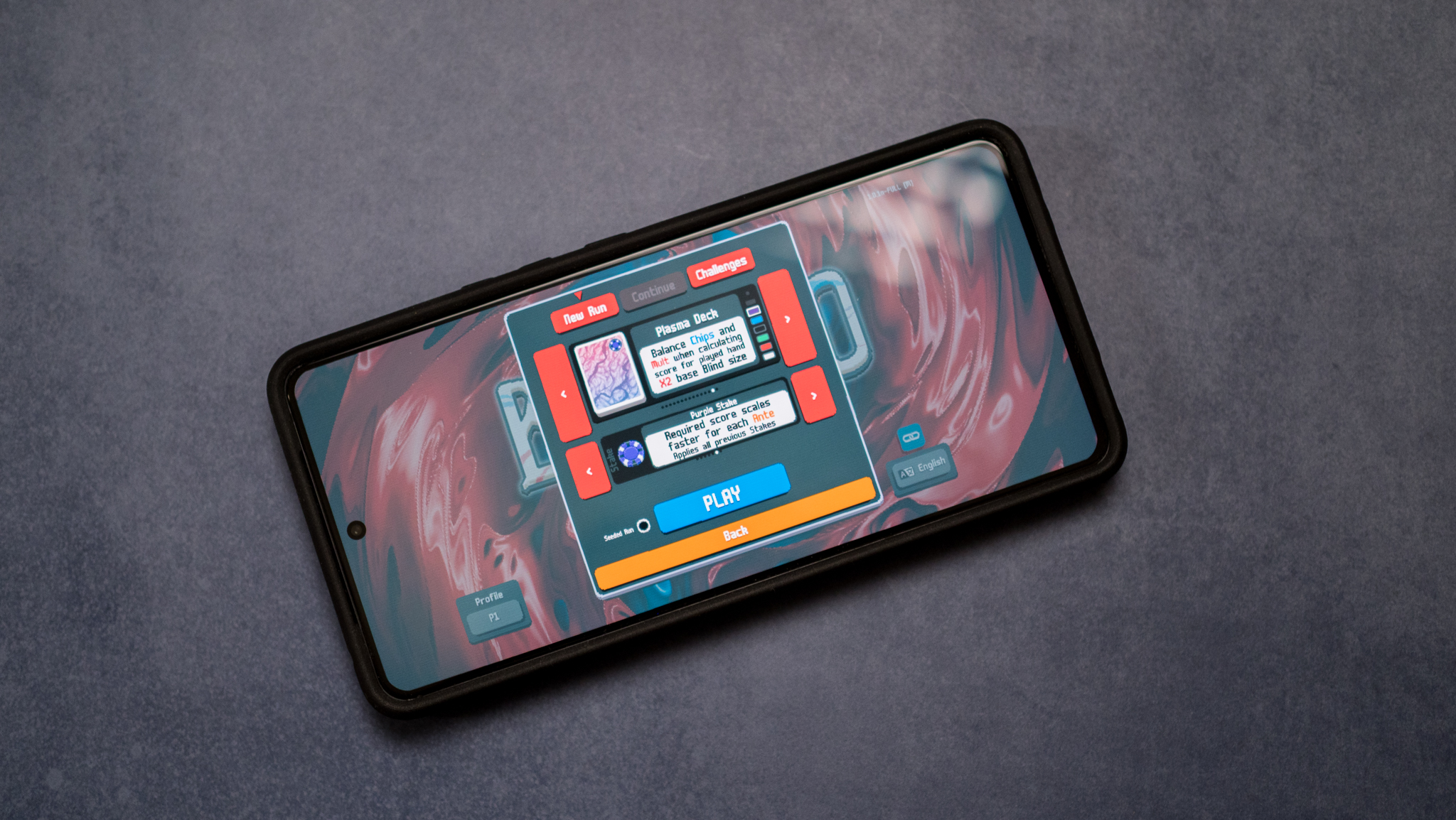It is a significantly attention-grabbing yr within the cell business, with Qualcomm and MediaTek making sizeable features with their choices. Qualcomm switched to a fully-custom design after a decade, and the result’s that the Snapdragon 8 Elite has generational features over the Snapdragon 8 Gen 3, and it’s magnificent.
MediaTek is not sitting idly by both, and the Dimensity 9400 has notable design wins and significantly better efficiency. In contrast, Google’s choice to play it secure with the Tensor G4 feels shortsighted, and the Pixel 9 Professional XL would not convey any significant upgrades on this space.
Hardwired
In Hardwired, AC Senior Editor Harish Jonnalagadda delves into all issues {hardware}, together with telephones, audio merchandise, storage servers, and networking gear.
I used over a dozen telephones powered by the newest chipsets within the final three months, and it is time to try how they differ. Earlier than I get to the benchmarks, a fast overview of what is new this yr. Clearly, we have to begin with Qualcomm, as a result of the Snapdragon 8 Elite is completely different to what we have seen up to now.
Qualcomm went to a completely {custom} CPU design in a transfer that is just like what Apple does with its personal silicon, and it allowed the chip vendor to fine-tune the platform by a substantial quantity. It is not astonishing, then, that the platform has the perfect single-and multi-core CPU scores of something I examined, and it even outmatches the iPhone 16 Professional Max — an enormous deal in and of itself.
The features with the GPU aren’t as noticeable, and whereas it continues to be probably the greatest round, it would not have an outsized lead. Fortunately, MediaTek was additionally in a position to ship a platform that is incredible, and the Dimensity 9400 has attractive upgrades. Though it makes use of inventory Arm cores, MediaTek’s choice to completely leverage large cores makes a transparent distinction in the case of efficiency. MediaTek has been doing this for 2 years now, and it nailed the basics.

Apparently, the GPU on the Dimensity 9400 is ready to maintain its personal in opposition to what Qualcomm is providing. That simply hasn’t been the case in earlier years, and I even managed to get higher scores with the Immortalis-G925 than the Adreno 830. Qualcomm nonetheless leads the way in which with sustained efficiency, but it surely’s nice to see MediaTek gaining floor on this key space.
There is not a lot to speak in regards to the Tensor G4, as Google is utilizing the identical core configuration and manufacturing node because the G3. Whereas Qualcomm and MediaTek made the swap to a 3nm node — delivering large features in effectivity — Google remains to be utilizing the 4nm node, and the Pixel 9 Professional XL would not fairly have the identical battery longevity.
I am utilizing ASUS’s Zenfone 12 Extremely because the Qualcomm baseline because it has a superb thermal resolution whereas nonetheless technically being a mainstream cellphone. I went with the Vivo X200 Professional to spotlight the Dimensity 9400; whereas the Discover X8 Professional additionally makes use of the identical platform, I felt that the X200 Professional did a greater job at gaming, so that is the one I am utilizing. And with Google, the Pixel 9 Professional XL has the perfect thermal administration system within the Pixel 9 sequence, so that is the one I used.
|
Class |
ASUS Zenfone 12 Extremely |
Vivo X200 Professional |
Google Pixel 9 Professional XL |
|---|---|---|---|
|
Geekbench 6 (single-core) |
3116 |
2381 |
1895 |
|
Geekbench 6 (multi-core) |
9824 |
7175 |
4111 |
|
PCMark Work 3.0 (General) |
25558 |
15731 |
13028 |
|
PCMark Work 3.0 (Internet Searching) |
32147 |
13716 |
10322 |
|
PCMark Work 3.0 (Video Modifying) |
9152 |
5823 |
7606 |
|
PCMark Work 3.0 (Writing) |
32843 |
24744 |
15582 |
|
PCMark Work 3.0 (Photograph Modifying) |
59086 |
13582 |
19293 |
|
3DMark Wild Life Excessive (rating) |
4782 |
6070 |
2483 |
|
3DMark Wild Life Excessive (FPS) |
28.64 |
36.35 |
14.8 |
|
3DMark Photo voltaic Bay (rating) |
7863 |
11021 |
NA |
|
3DMark Photo voltaic Bay (FPS) |
29.9 |
41.91 |
NA |
|
Geekbench AI (Quantized Rating) |
5478 |
2436 |
2620 |
In terms of the CPU, it is clear that Qualcomm has a particular edge this yr. The {custom} design allowed units just like the Zenfone 12 Extremely and Honor Magic 7 Professional to internet the perfect scores in Geekbench 6’s single- and multi-core workloads, and I do not see this altering over the course of 2025. The Dimensity 9400 does an excellent job as nicely, and whereas it’s quicker than final yr, it would not outshine Qualcomm.
As you’ll be able to think about, the Pixel 9 Professional XL lags behind its rivals, posting scores that simply do not measure up — the Snapdragon 8 Gen 3-based OnePlus 13R does a greater job. Annoyingly, it is a related story with the GPU as nicely, and the system simply would not come near 2025 flagships. That mentioned, I did not see any slowdowns in common use, and if something, Google did an excellent job with optimization with the Android 15 replace, and the Pixel 9 Professional XL has significantly better fluidity than earlier years.
The most important problem is that the 9 Professional XL simply would not ship the identical degree of efficiency in demanding video games. You aren’t getting secure framerates, it throttles too quickly, and it would not even measure as much as Qualcomm and MediaTek’s 2024 choices, a lot much less their newest platforms.
Google says it positioned on-device AI because the differentiator with the Tensor G4, however even on this space, it would not do anyplace in addition to Qualcomm. It has a slender lead over the Dimensity 9400 in Geekbench’s AI workloads, however the Zenfone 12 Extremely as soon as once more has the distinct edge, with Qualcomm’s NPU clearly the one to beat.

In terms of gaming, the Immortalis-G925 within the Dimensity 9400 delivered the perfect scores in 3DMark’s Wild Life Excessive and Photo voltaic Bay exams. That mentioned, the platform tends to throttle aggressively, and the X200 Professional had a stability rating of simply 49% within the demanding Metal Nomad Gentle endurance run. In contrast, Qualcomm-powered units managed a rating of at the least 70%, with most units going as much as 90% in the identical check.
The draw back to restricted throttling is that Qualcomm-based units are likely to run hotter. The X200 Professional went as much as a most of 44 levels Celsius after an prolonged gaming session, however the Zenfone 12 Extremely hit 46 levels, and Nubia’s Z70 Extremely bought as much as 59 levels — the best of any cellphone I examined.
Artificial exams do not reveal the entire story, however having used these units for an prolonged period of time, what’s clear is that each Qualcomm and MediaTek have completed a superb job this yr. I am glad that MediaTek is ready to ship a product that goes up in opposition to Qualcomm within the high-end class — that simply hasn’t been the case in earlier years.

One other attention-grabbing level is the ISP; whereas Qualcomm continues to make features on this space, MediaTek outdid itself this yr, with the X200 Professional and Discover X8 Professional delivering the perfect digital camera packages of 2025. After all, the digital camera {hardware} and tuning makes a sizeable distinction, however the ISP on the Dimensity 9400 is an integral a part of the bundle, and MediaTek did all the appropriate issues.
It is a related state of affairs with battery life. The important thing speaking level is the introduction of silicon-carbon battery tech, and Dimensity 9400-powered units have a transparent edge in the case of battery life. Whereas the OnePlus 13 and Vivo X200 Professional have an identical 6000mAh cells, the X200 Professional managed to last more in my testing, delivering an extra hour of screen-on-time.
I did not do any quantitative battery testing, however my utilization throughout units is roughly unchanged, and the 2 telephones that delivered the perfect battery life are the X200 Professional and Discover X8 Professional, each powered by the Dimensity 9400. Finally, each Qualcomm and MediaTek did a standout job with their 2025 designs, and whereas MediaTek is seeing higher design wins, Qualcomm continues to dominate the North American market. I do not see that established order altering anytime quickly, however what’s refreshing is that MediaTek has a viable different within the Dimensity 9400 in different international markets.

